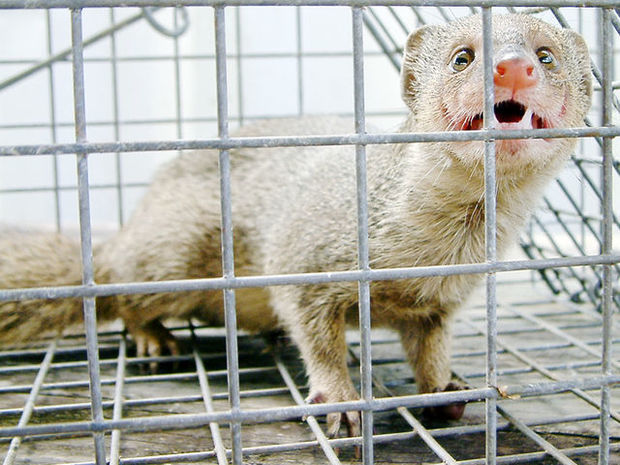LIHUE — The public comment period on a federal draft report that proposes new ways to eliminate mongoose has been extended, U.S. Fish and Wildlife Service officials stated Monday. The reason, according to Christine Ogura, public affairs officer for the
LIHUE — The public comment period on a federal draft report that proposes new ways to eliminate mongoose has been extended, U.S. Fish and Wildlife Service officials stated Monday.
The reason, according to Christine Ogura, public affairs officer for the Pacific Islands division of U.S. Fish and Wildlife, is to align the comment period with that of the Hawaii Department of Land and Natural Resources, which helped develop the report.
“We are hoping the state’s comment period will open sometime this month,” Ogura said. “In the meantime, ours is reopened. We reopened the comment period for the public’s benefit so they can write comments to both agencies at one time.”
In a news release, the U.S. Fish and Wildlife Service said the other motive is for both agencies to be able to jointly hold public meetings throughout the islands, though the dates of those meetings have yet to be set.
The comment period on the draft report originally closed on Oct. 28 and has been extended to April 7.
Ogura said the entities are looking for public weigh-in on what they think is important when protecting native species as well as proposed actions and alternatives for mongoose control.
All of the comments are available for public review, so people can see what others have said, Ogura said.
The draft environmental impact statement details the use of mechanical traps, compressed carbon dioxide traps, and rodenticides as ways to control the mongoose and rodent populations, according to the Associated Press.
Bill Lucey, project manager for the Kauai Invasive Species Committee, said the carbon dioxide traps, specifically, could be put to use on the island, if they’re approved.
“They still have to go through testing, they’re designed right now for rats, not for mongoose yet,” Lucey said.
Officials use snap traps and live traps to catch mongoose on Kauai, and maintain about 20 traps at the two shipping ports in Nawiliwili Harbor.
“We use live catch traps if we’re anywhere near settlements, so if we catch someone’s cat, we can let it go,” Lucey said.
It’s not just the federal and state governments that are reworking their mongoose management strategies. The Kauai Invasive Species Committee is also renovating its mongoose trapping and reporting protocol.
“We’ve just completed our final draft of those over the holidays and it’s out for review right now,” Lucey said. “We’re hoping this month that we’ll have final approval from the Fish and Wildlife service for standard operating procedures.”
The process started in August when about 50 mongoose experts met on Kauai to discuss new standard operating procedures when it comes to dealing with the threat.
After the new proposed procedures have the OK from U.S. Fish and Wildlife, the organization will launch a yearlong, islandwide study that will document Kauai’s mongoose population.
“We’re making new trap boxes, with a new response protocol, and new interview (techniques),” Lucey said. “And the next step, next year after the assessment is done, we determine whether there is or is not a population of mongoose on Kauai.”
The year-long assessment is going to entail 600 tracking tunnels that will be placed all over the island, Lucey explained. Those contraptions are basically what they sound like — baited tunnels with ink on the bottom, so that whatever goes into the tunnel leaves tracks.
“If a mongoose goes in for the bait and leaves tracks, we’ll file them and then if we get a track of a mongoose, we have a new procedure for responding,” Lucey said.
Their new procedure is to put out a grid of snap traps over five square kilometers in hopes of catching the animal.
“Those traps will be in boxes so cats and dogs and people can’t get into them,” Lucey said.
As far as interviews, Lucey said the goal is to make the process of interviewing those who report sightings more scientific.
“We have sightings monthly, but it’s very difficult numerically to determine how credible the sightings are,” Lucey said.
Lucey said they’ve caught two mongooses so far in their traps and have many more reported to them, but that doesn’t necessitate a reproducing population.
“If mongoose get established here, the ground nesters, all those birds would get hammered,” Lucey said. “And there’d be no more Kauai chickens.”
Those who are interested in commenting on the federal draft environmental impact statement on the eradication of mongoose and rodents on Hawaii can do so either online, or via U.S. mail.
Online, the commenting page can be reached at www.regulations.gov.


